Accepted Scientific Name: Pseudolithos migiurtinus
Natl. Cact. Succ. J. 30(2): 31 (1975)
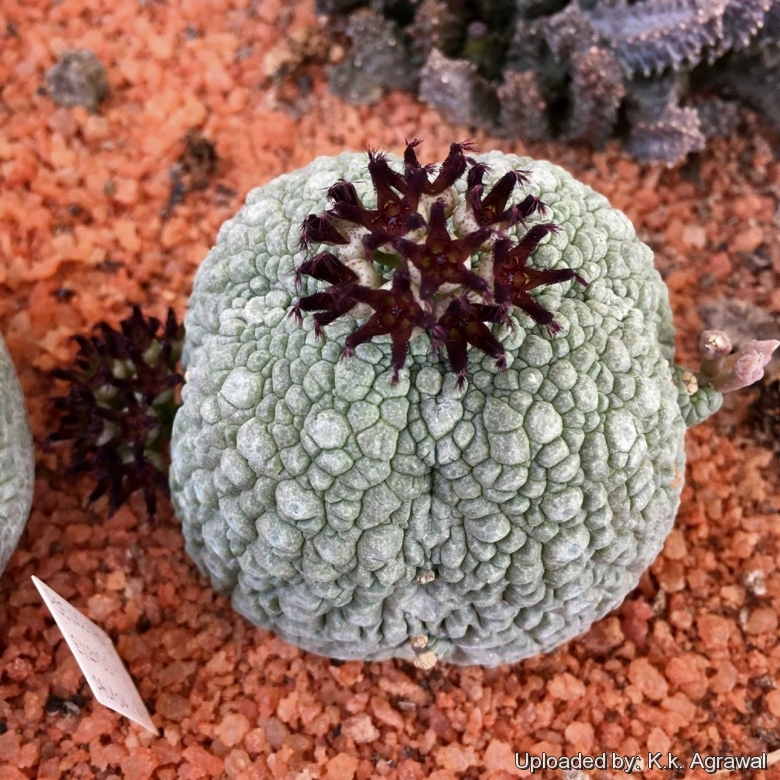
Pseudolithos eylensis Photo by: K.k. Agrawal
Origin and Habitat: Town of Eyl (or Eil) in the North East of Somalia.
Habitat: Grows in grit with little water and some sun.
Synonyms:
See all synonyms of Pseudolithos migiurtinus
back
Accepted name in llifle Database:Pseudolithos migiurtinus (Chiov.) P.R.O.BallyNatl. Cact. Succ. J. 30(2): 31 (1975)Synonymy: 5
back
Common Names include:
CHINESE (中文): 圓柱型凝蹄玉
Description: Pseudolithos eylensis (eilensis) is different and recognizable from Pseudolithos migiurtinusSN|12762]]SN|12758]] or Pseudolithos cubiformisSN|12758]]SN|12762]] for its monstrous and irregular squat form. Many consider this to be no more than a local form or variety of Pseudolithos migiurtinus.
Habit: It as a quat domed body. Usually single stemmed.
Stem: It can grow to 12 cm in diameter and reach a height of 15 cm. The colour may vary from light green (in shaded environments) to reddish-brown (in full sun).
Flowers: Dark red to brown, with hairy petals with a lighter centre. Like the other Pseudolithos, it smells like rotting meat, and thereby attracts flies. It blooms abundantly, but pollination is only carried out by flies that are their natural pollinator. Manually it is extremely hard to obtain the fecundation of these flowers.
Subspecies, varieties, forms and cultivars of plants belonging to the Pseudolithos migiurtinus group
 Pseudolithos eylensis: has a more monstrous and irregular squat form. Distribution: Town of Eyl (or Eil) in the North East of Somalia.
Pseudolithos eylensis: has a more monstrous and irregular squat form. Distribution: Town of Eyl (or Eil) in the North East of Somalia.  Pseudolithos migiurtinus (Chiov.) P.R.O.Bally: has a warty, usually single stem, ± oval but variable in shape, colour and size and often four-sided. Flowers dark red 5/7 mm across. Distribution: North East of Somalia
Pseudolithos migiurtinus (Chiov.) P.R.O.Bally: has a warty, usually single stem, ± oval but variable in shape, colour and size and often four-sided. Flowers dark red 5/7 mm across. Distribution: North East of Somalia
Bibliography: Major references and further lectures
1) Urs Eggli “Illustrated Handbook of Succulent Plants: Dicotyledons” Springer Science & Business Media, 2002
2) Hermann Jacobsen “A handbook of succulent plants: descriptions, synonyms, and cultural details for succulents other than Cactaceae” Blandford Press, 1960” Timber Press, 18/May/1999
3) Focke Albers, Ulrich Meve “Illustrated Handbook of Succulent Plants: Asclepiadaceae: Asclepiadaceae” Volume 4 Springer Science & Business Media, 2002
 Pseudolithos eylensis Photo by: Gennaro Re
Pseudolithos eylensis Photo by: Gennaro Re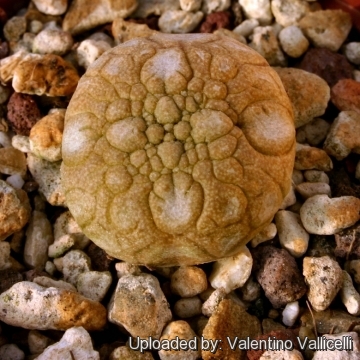 - In full sun plants take a mimetic reddish-brown pigmentation Photo by: Valentino Vallicelli
- In full sun plants take a mimetic reddish-brown pigmentation Photo by: Valentino Vallicelli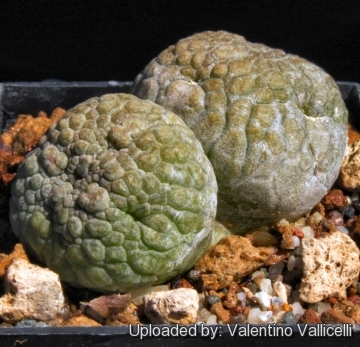 Pseudolithos eylensis Photo by: Valentino Vallicelli
Pseudolithos eylensis Photo by: Valentino Vallicelli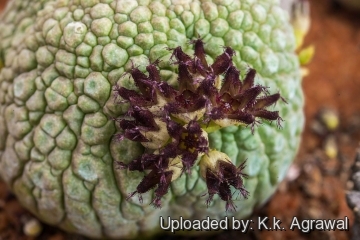 Pseudolithos eylensis Photo by: K.k. Agrawal
Pseudolithos eylensis Photo by: K.k. Agrawal Pseudolithos eylensis Photo by: K.k. Agrawal
Pseudolithos eylensis Photo by: K.k. Agrawal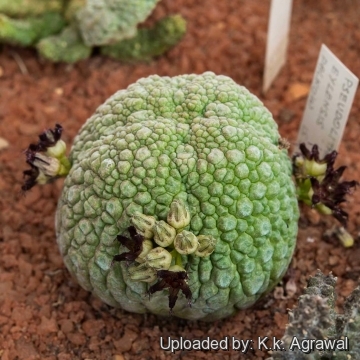 Pseudolithos eylensis Photo by: K.k. Agrawal
Pseudolithos eylensis Photo by: K.k. Agrawal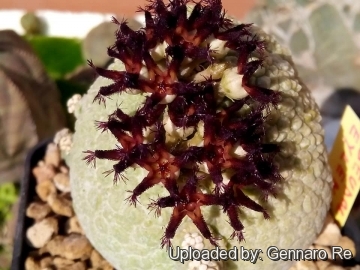 Pseudolithos eylensis Photo by: Gennaro Re
Pseudolithos eylensis Photo by: Gennaro Re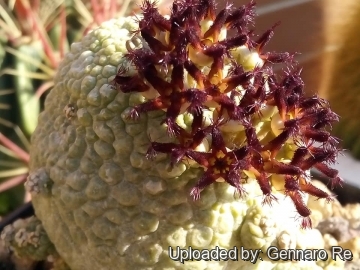 Pseudolithos eylensis Photo by: Gennaro Re
Pseudolithos eylensis Photo by: Gennaro ReCultivation and Propagation: Relatively easy to grow, but mistakes are costly. If rot sets in, there is practically no time, nor warning, before the plant turns to expensive mush.
It needs regular watering, especially during the hottest summer days. Provide also some light watering if the green house temperatures in winter are elevated. Either excessive or very scarce watering can induce rot.
Frost Tolerance: Winter temperatures must be kept over 10° C. ( But it can withstand to winter night temperature down to about 5° )
Sun Exposure: It takes a great advantage if grown in very strong light but sheltered from full sun.
Cultural Practices: Provide very good ventilation. It grow quite easily and fast on its own roots. It is not difficult as commonly supposed, but inaccuracies are fatal. If rot starts the plant will almost inevitably die. This plant is a candidate for under-potting, as long as you keep it watered.
Propagation: Seeds are the only way of reproducing



















